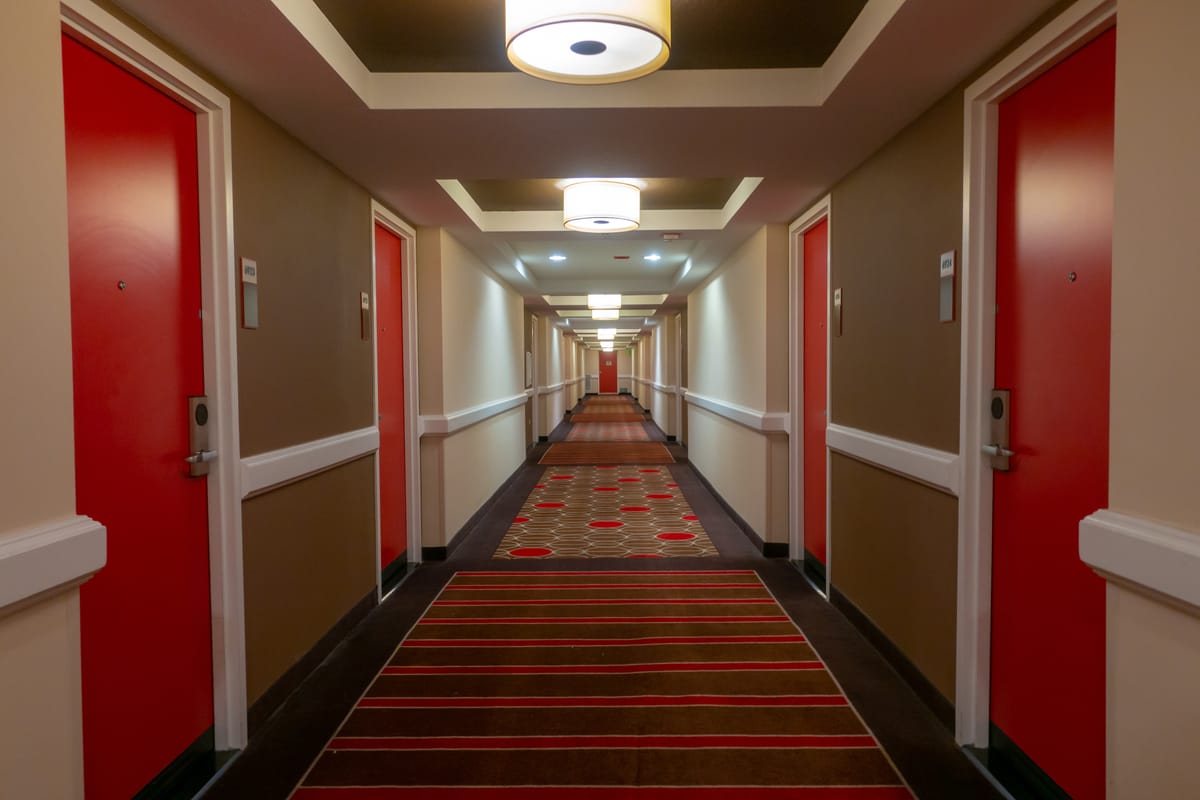Ozempic alters tourism
Plus: What could spur a slumbering hotel transactions market?

Forget business as usual—this week’s hospitality news is all about shifts—some surprising, some not so much (we’re looking at you, economy 😒). First up, Ozempic is changing more than waistlines—it’s altering travel and tourism in ways you might not expect. Then, forget the fridge magnets—why are more travelers opting for tattoos as souvenirs? And if you thought selling a hotel would be a breeze this year, think again. We’re breaking down why offloading properties is a risky business in this volatile market.

Is Ozempic killing foodie tourism? GLP-1 meds are all the rage now, but their effects on travel and travelers may surprise you.
It’s not much, but it’s something. CBRE released its 2025 Global Hotel Outlook, with U.S. RevPAR expected to grow 2%. Strongest growth is likely in urban areas and largely fueled by room rate gains.
A lifetime souvenir. Want to commemorate a trip with some indelible ink? Kimpton is embracing the “tattourism” movement with Tiny Zaps tattoo studio pop-up events in Nashville, New Orleans, Los Angeles, New York and Washington, D.C. starting in April.
Reviews = your hotel’s credit score. Reviews are more than reputation management—they’re actually the secret to your pricing power and your conversion success.
Out with the ‘one-size-fits-all’ approach. From membership-driven hospitality to wellness through food and self-care, Boutique & Luxury Lodging Association board members share their thoughts on the top 10 trends shaping boutique hospitality today.

'Wellness is no longer just a niche segment—it’s becoming a key expectation'
Maggy Dunphy, senior director of wellness and spa operations at CoralTree Hospitality, is a spa and wellness executive with more than 25 years of experience collaborating with owners, architects and designers to craft compelling visual narratives and design spaces that are both inspiring to experience and fulfilling to work in. Her approach is rooted in intentionality—creating environments that foster well-being and a sense of purpose for all who engage with them. Dunphy shares what wellness innovations she’s most excited about and a look into what elements are integral to the wellness traveler’s journey. -Jennifer Glatt
How have guest expectations around wellness changed?
Guest expectations have shifted significantly, particularly with the rise of the wellness traveler. The typical transient traveler has shifted into this wellness traveler category that prioritizes health and well-being, and it spans across all age groups. Wellness is no longer just a niche segment—it’s becoming a key expectation for many travelers. Guests now expect a fitness center with more than just a few cardio machines and weights, and a place to stretch, do yoga and meditate; easy access to wellness amenities that promote a good night’s sleep, such as blackout curtains, sound machines and pillow options; ways to get outside and connect with nature—areas nearby where they can walk or run, making the destination itself part of their wellness experience.
How do you personalize wellness experiences without overcomplicating operations?
Personalizing wellness experiences comes down to being proactive and prepared, rather than trying to transform the property into a full-fledged wellness destination. It's about working with the resources and spaces available while considering staffing levels. For example, you can use existing spaces like a rooftop bar or unused meeting rooms for activities like morning yoga or meditation. Having simple yet thoughtful touches, such as walking maps available at the front desk or a small collection of yoga mats for guests to borrow, can make a significant difference without adding complexity. It’s also important to pay attention to guest preferences over time and build what I like to call a "Wellness Closet"—essentially, a collection of commonly requested items and services. Most wellness requests tend to be similar, so preparing in advance allows for smooth execution.
What wellness trends or innovations are you most excited about?
I’m most excited about the growing desire for wellness options while traveling, as more guests are prioritizing their well-being during their trips. One trend I’m particularly excited about is the rise of thermal bathing experiences, which are becoming the norm. The integration of saunas, cold plunges and other hydrotherapy options is becoming more common, even at properties without traditional spa facilities. These offerings provide guests with a rejuvenating, restorative experience, making it easier to recover and maintain wellness while traveling. As the wellness travel market continues to grow, I see this trend evolving even further, with new innovations in recovery-focused amenities—like cryotherapy or more advanced hydrotherapy treatments—becoming standard offerings. I love to be a part of helping guests stay healthy and relaxed while on the road.
Interview edited for brevity and clarity.


Turn your dream into a thriving micro-resort
Isaac French knows firsthand what it takes to build a hospitality brand from scratch. At 24, he turned $20,000 into Live Oak Lake, a stunning retreat of modern lakeside cabins. But when Airbnb unexpectedly suspended his account, he had to get creative—leveraging social media to drive $40,000 in direct bookings overnight.
That pivot changed everything. In just a year, his business grossed $1M with 95% occupancy, powered by compelling storytelling, stunning design, and hospitality that goes beyond expectations. Then, he exited for $7M, just a year and a half after opening!
Now, he’s sharing those hard-earned lessons in Experiential Hospitality, a newsletter for over 30,000 operators, creators and dreamers looking to craft unforgettable guest experiences.
Each Monday, get insights on design, branding, direct bookings, and the art of hospitality straight to your inbox.
If you’re building something special, this is the newsletter you need. Subscribe here today.
Above: Cabins at Live Oak Lake. (Courtesy Shelby Wilray)

A retro boutique motel on Route 66
The glow-up of the 1960s-era Downtowner Motor Inn ensured that the distinctive scalloped porte-cochère, restaurant patio and original stacked letter sign remained for its encore performance. Palisociety’s latest ARRIVE hotel recently opened in Albuquerque, N.M., and is the very essence of laid-back luxe.
Why it matters: Palisociety founder and CEO Avi Brosh has perhaps cracked the code on bridging the dichotomies of today’s traveler, who seeks hospitality that is personal but supremely streamlined, modern but splendidly simplified. And every traveler relishes a design-driven room that is thoughtful, comfortable and full of lowkey luxuries, which ARRIVE hotels provide in spades. (Hospitality Design)

Selling hotels just got a lot harder
Looking to sell one or more of your hotel properties? Prepare for battle, as economic conditions are not expected to improve anytime soon. Speakers at the recent Hunter Hotel Investor Conference discussed market volatility, the possibility of a U.S. recession and what could spur a slumbering hotel transactions market.
Why it matters: Recession concerns, higher financing costs and long-term uncertainty all make for a difficult business arena. Economic instability puts pressure on both operations and asset value, making strategic decision-making more complex for both hotel owners and operators. (CoStar)

Don’t leave money on the table
Capturing maximum value without sacrificing occupancy comes down to five practical indicators, according to travel and hospitality tech platform Lighthouse. If you’ve got the data-backed opportunity to raise your rates, move forward with confidence.
Why it matters: Numbers don’t lie; strong room night pickup, increased year-over-year demand and market demand all contribute to market intelligence that can boost your bottom line. “The difference between good and great revenue management often comes down to recognizing these signals earlier and acting on them more decisively than your competitors.” (Hotel News Resource)

Hospitality merch gets a makeover
Target x Diane von Furstenberg. Hermes x Apple. Starbucks x Spotify. Brand collaborations are nothing new. But, says Mhairi Mann, digital director of ROADBOOK, “as hotel souvenirs are increasingly seen as badges of belonging and discerning travelers seek out exclusivity, the next big thing in retail might not be launched by a fashion brand, but by a hotel.”
Why it matters: Retail offerings can reflect a brand attuned to evolving cultural shifts, and collaborations can be curated with local brands and partnerships to reflect the destination’s creative scene. “Merchandise is no longer a nice-to-have, but a key component of a company’s marketing strategy,” Mann says. Hotels with a unique retail approach can add contextual layers to an item, a destination and even an experience. (ROADBOOK)
💯 Enjoying Mint Pillow? Share it with a friend.
👋 Have a story idea or want to say hello? Email us at newsletter@mintpillow.co




